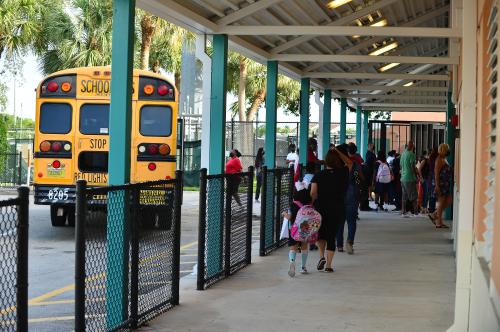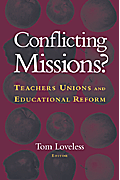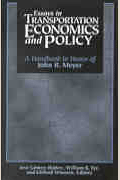Today is World Teachers’ Day, which gives us reason to pause and express our appreciation to the job of thousands of teachers who have made a lasting impact in our lives, and continue to influence the lives of children daily. Evidence shows that teachers are one of, if not the most important input of schooling for raising student achievement. But their role goes beyond academic areas, for they are not only educators, they are a source of encouragement and inspiration.
In honor of their day, we wanted to kick off a new series of occasional posts focusing on who teachers are and what makes them special. The lead-off topic for today is an exploration of how teachers spend their non-working hours with their own kids at home, and specifically, how they engage in educational activities with their kids.
There is a widespread belief that parental involvement improves the outcomes of children in schools. However, probing into the research, this relationship is not as clear cut as many believe. Some studies have shown a positive association between parent engagement and homework completion, as well as in verbal and writing outcomes. Yet, parental involvement in mathematics showed a negative relationship. This result might be explained by the fact that mathematics need greater subject matter skills and some parents may experience frustration and anxiety in helping with their kids’ math homework.
In spite of the mixed results in the literature, we feel it’s insightful to see how parents who are teachers differ in their time with kids from non-parent teachers. Let’s take a look.
Data on teachers’ time use
We conduct this comparison on teachers’ and non-teachers’ engagement in educational activities using the American Time Use Survey (ATUS)[1], a national representative survey aimed at measuring how people in the U.S. divide their time among life’s activities. We use the ATUS sample for the 2003 to 2013 years, and restrict the data to include parents who reported being employed and having at least one child between 6 and 17 years old. Since we are interested in activities related to education, we only include survey respondents who report on activities occurring on weekdays of the months during the school year (September to May). The final sample is compromised of 11,993 non-teachers and 1,000 teachers.
Comparing time on educational activities
As a starting point, let’s look at the share of teachers and non-teachers who are engaged in four main activities with their kids: reading, helping with their homework, playing, or talking to them during typical non-working hours (2:00 p.m. to midnight). In Figure 1 we plot out the share of respondents reporting any of these activities, and the figure is constructed to accumulate time across all four of these categories. The time use data are binned into five-minute intervals for presentation here.
Based on this figure, we observe that only a small percentage of teachers and non-teachers spent time with their kids at any given time of the afternoon and evening (notice the scale on the y-axis). In fact, the maximum percentage of non-teachers who do these activities is roughly 6 percent at any given point in time, while the maximum among teachers is about 7.5 percent. And in general, we do see teachers reporting more time spent with their kids in these activities.
In addition, the time of day in which most non-teachers are doing any educational or recreational activity with their children is between 6:20 p.m. and 8:55 p.m. In the case of teachers, there are two peak times, both of which are greater than the peak for non-teachers. The first peak is between 3:50 p.m. and 5:10 p.m., and the second is between 7:30 p.m. and 8:30 p.m. This difference is almost certainly explained by the fact that in general non-teachers leave work at a later time than teachers.

As a reflection of teachers knowing the importance of parental engagement in educational activities, it is expected that more teachers than non-teachers read and help their kids with homework. In Figure 1 we observe that this is the case. While the maximum percentage of teachers who read with their kids is 2.5 percent and who help with homework is 4.5 percent. These percentages for non-teachers are significantly lower, at 1.1 percent and 3 percent, respectively. The activity in which both teachers and non-teachers are most engaged in during their non-working hours is play with their kids.
How many versus how much
Note that these differences between teachers and non-teachers in the figure conflate both extensive (how many are reporting this activity) and intensive (how much time is reported on this activity). When we dug a little deeper to analyze the length of time spent in each activity, we find a significant difference between teachers and non-teachers for helping with homework on both of these extensive and intensive margins.
In these activities, non-teachers spent a longer duration of time engaged with their kids. Among the 26 percent of teachers who do homework with their kids at any time during the afternoon/evening, they spent an average of 45 minutes engaged in this activity, while among the 19 percent of non-teachers helping kids with their homework, they spent 51 minutes in this activity. When playing, on average, non-teachers spent 71 minutes with their kids, while teachers spent 50 minutes. Conversely, in reading, we cannot find a significant difference between teachers and non-teachers. Both groups, on average, spent approximately 25 minutes with their kids.
Many teachers are parents, and parents also have important roles supporting teachers. Using the American Time Use Survey, we can see a few differences in how teacher and non-teacher parents spend time with their kids, and this provides a little insight onto how non-teachers might do a little better to help support their kids. Also, we need to acknowledge that for many teachers, their job does not end when the bell rings. We should continue to look for ways in which we can support our kids’ teachers, as they continue to encourage and teach our children.
[1] Sandra L. Hofferth, Sarah M. Flood, and Matthew Sobek. 2013. American Time Use Survey Data Extract System: Version 2.4 [Machine-readable database]. Maryland Population Research Center, University of Maryland, College Park, Maryland, and Minnesota Population Center, University of Minnesota, Minneapolis, Minnesota. http://www.atusdata.org









Commentary
World Teachers’ Day: Lessons from teachers’ time spent with their own children
October 5, 2016